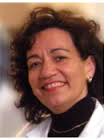
Ornella Parolini
President of IPLASS
Italy
Title: Immunomodulatory mechanisms underlying the therapeutical effects of amniotic membrane-derived cells
Biography
Biography: Ornella Parolini
Abstract
The modern understanding of regenerative medicine focuses on the immunomodulatory potential of MSC, rather than their differentiation capability. In the complex scenario of stem cells, the human placenta has blossomed as an interesting source of therapeutic cells. Our group has pioneered the understanding of the immunomodulatory potential of cells isolated from human term placenta. We have previously described the ability of mesenchymal cells isolated from the amniotic membrane (hAMSC) to reduce T cell proliferation induced by alloantigens or mitogens, and their capability to block the differentiation of monocytes to dendritic cells. Recently, we demonstrated that primary and expanded hAMSC, cultured with monocytes in either contact or transwell settings, strongly inhibited the differentiation of DCs and induced a shift toward M2-like macrophages. This was observed even when medium conditioned by hAMSC (CM-hAMSC) was aplied, but not when using cells isolated from the epithelial layer of the amniotic membrane (hAEC). We’ve also shown that monocytes co-cultured with hAMSC and hAEC possessed different secretomes. In a more recent study we showed that CM-hAMSC was able to equally suppress the proliferation of central and effector memory subsets of both CD4+ T-helper (Th) and CD8+ cytotoxic T-lymphocytes. CM-hAMSC induced significant changes in the phenotype of CD4+ cells, such as the reduced expression of markers associated to the Th1 and Th17 populations. Significant changes in cytokine secretion were also induced by CM-hAMSC. We also showed that CM-hAMSC significantly induced the Treg compartment, as shown by an induction of proliferating CD4+FoxP3+ cells and CD25+FoxP3+ and CD39+FoxP3+ Treg and increased secretion of TGF-β. Taken together, these multifaceted, immunomodulatory properties of cells isolated from the amniotic membrane of human term placenta, and conditioned medium derived from cell culture, render them unique and attractive for their potential in a variety of applications, especially inflammatory diseases.
